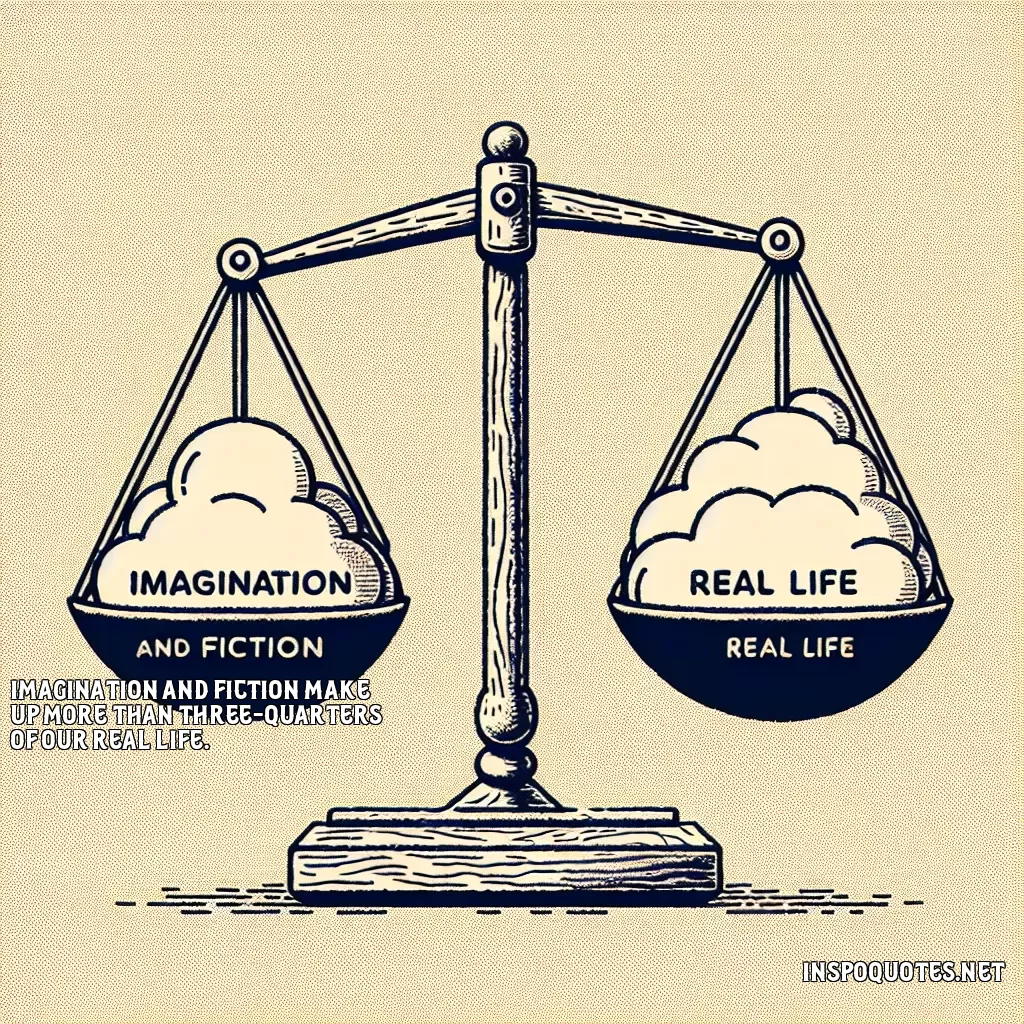
Imagination and fiction make up more than three-quarters of our real life.
Author: Simone Weil
👁️ 17 views

Imagination and fiction make up more than three-quarters of our real life.
👁️ 17 views
The quote "Imagination and fiction make up more than three-quarters of our real life" suggests that much of human experience transcends objective reality and ventures into the realms influenced by imagination and narrative. At its core, the statement emphasizes the profound impact that the creative mind has on our perception and experience of life. Imagination is a fundamental mental faculty that allows humans to envision possibilities beyond their immediate surroundings. It shapes our beliefs, drives innovation, and fuels our dreams. It enables us to conceptualize what does not presently exist, providing a blueprint for future reality. This capacity allows for creativity, problem-solving, and envisioning various scenarios, thereby enriching our everyday lives. Fiction, which is a product of imagination, serves as a powerful tool in human culture. Through stories, people explore diverse perspectives, emotions, and worlds. Fiction invites us to question the "real" and challenges us to ponder alternative realities, influencing our values and expanding our empathy. It enables humans to connect with and sometimes make sense of their experiences, often providing frameworks through which people interpret their personal narratives. By suggesting that imagination and fiction constitute three-quarters of our real life, the quote acknowledges how integral storytelling and creativity are to being human. These elements don't just embellish life; they actively construct the cognitive and emotional frameworks that define our existence. Most human endeavors—be it art, science, or philosophy—begin with an imaginative leap or a narrative impulse. Thus, the interplay of imagination and fiction doesn't only enrich life but is a significant part of its core fabric, shaping our understanding of reality itself.
Quote By: Simone Weil
Simone Weil (1909–1943) was a French philosopher, mystic, and social activist known for her profound and often challenging ideas on ethics, politics, and spirituality. Born into a well-educated Jewish family in Paris, Weil displayed remarkable intellectual abilities from a young age. She studied at the prestigious École Normale Supérieure, where she was influenced by the works of great philosophers and leftist politics. Weil was deeply engaged with the issues of her time, particularly the societal struggles of the working class, and she worked as a teacher and laborer to better understand the lives of those she fought for.
In the late 1930s, Weil became increasingly involved in political movements, participating in the Spanish Civil War on the Republican side, which greatly impacted her views on violence and justice. Her experiences in Spain led her to a deep reflection on the nature of oppression and the moral responsibilities of individuals. Simone Weil's writings often blend philosophical inquiry with spiritual contemplation, emphasizing the need for compassion and a deep recognition of the suffering of others.
Weil's major works, such as "Gravity and Grace" and "The Need for Roots," reveal her unique perspective on the relationship between the individual and society. In "The Need for Roots," she argues for the necessity of reconnecting with one's roots as a foundation for social stability and individual identity. Throughout her writings, Simone Weil grapples with the nature of love and attention, proposing that genuine attention to others is a form of love that can lead to social transformation.
Despite her relatively short life, Simone Weil's legacy endures through her thought-provoking essays and philosophical inquiries. She was not only a thinker but also a deeply empathetic individual who sought to bridge the gap between intellectual critique and concrete action. Weil’s insistence on the spiritual dimensions of human existence and her commitment to social justice continue to resonate in contemporary discussions of philosophy, ethics, and the human condition. Her life and work exemplify a dedication to truth and justice that remains inspiring to many.